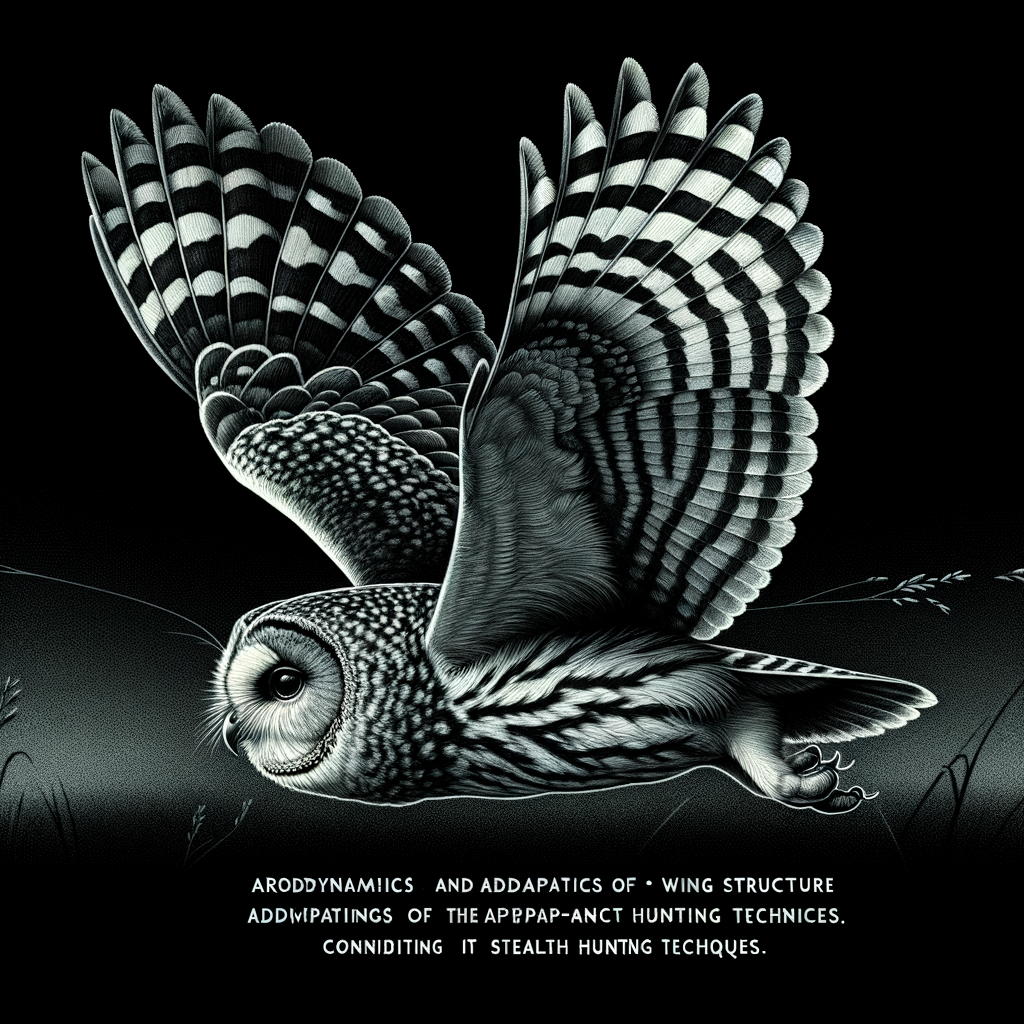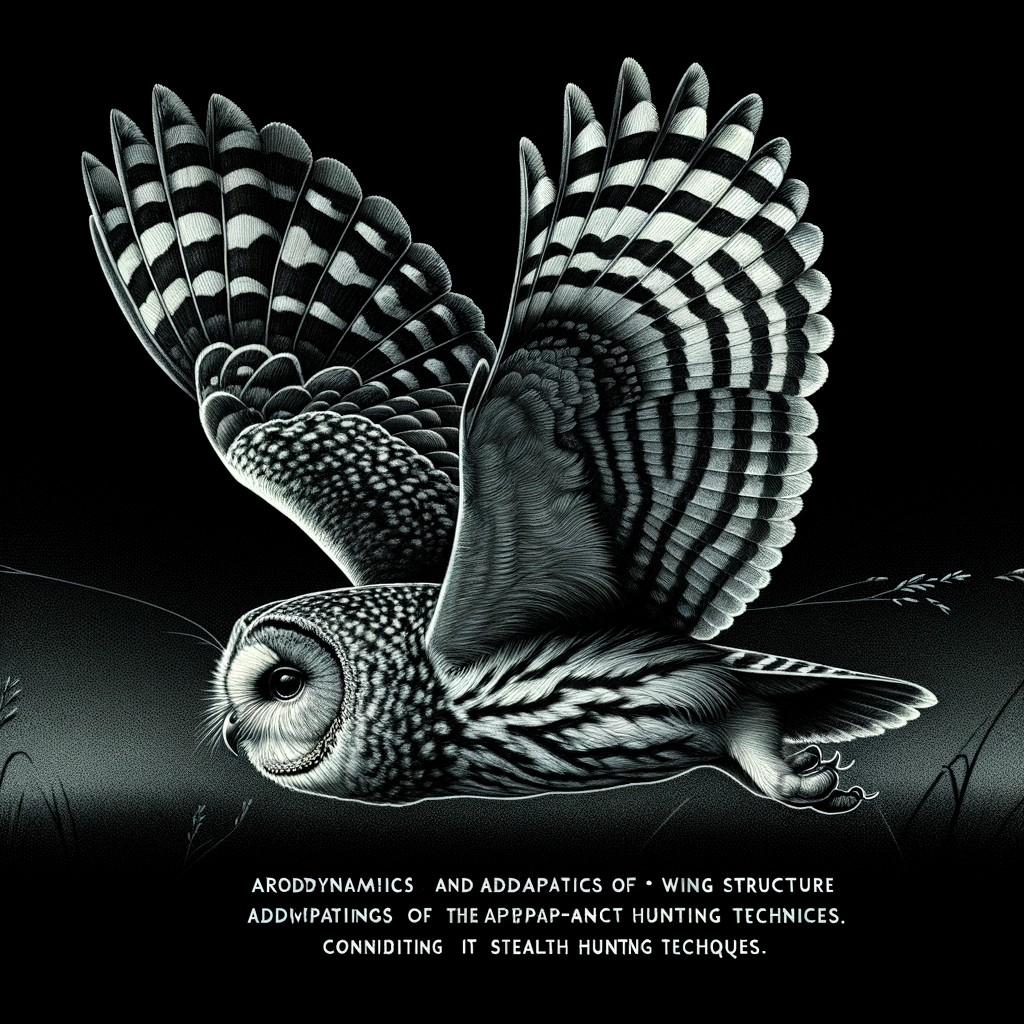
Introduction to Owl Silent Flight
- Overview of Owl Silent Flight: Owls are known for their ability to fly silently. This unique skill helps them hunt effectively at night. Unlike other birds, owls have special feathers that reduce noise. This makes them almost invisible to their prey.
- Importance of Silent Flight in Owls: Silent flight is crucial for owls. It allows them to sneak up on their prey without being heard. This gives them a better chance of catching food. Silent flight also helps owls avoid predators. By flying quietly, they can stay safe and hidden.
Owl Flight Mechanics
Basics of Owl Aerodynamics
-
How Owls Fly: An Overview
They have special feathers and wings that help them glide through the air. These birds use their wings to push against the air and lift off the ground. Owls can also change the shape of their wings to fly faster or slower.
One key thing about owl flight is that they can fly without making much noise. This helps them sneak up on their prey. Owls are known for their silent flight, which is very different from other birds.
-
Aspects of Owl Aerodynamics
Owls have some unique features that help them fly so quietly. One of these features is their special feathers. The edges of their feathers are soft and fringed. This helps to break up the sound as they fly.
Another unique aspect is the shape of their wings. Owl wings are broad and rounded. This shape helps them to glide smoothly and silently. The wings also have a special structure that reduces noise.
Here is a table that highlights some key features of owl aerodynamics:
Feature Description Feather Edges Soft and fringed to reduce noise Wing Shape Broad and rounded for smooth gliding Wing Structure Special structure to reduce noise These unique features make owls excellent hunters. They can fly close to their prey without being heard. This gives them a big advantage in the wild.
Specifics of Owl Wing Structure
-
- Key features of owl wing design
Their wings are large and broad, which helps them glide smoothly. The feathers on their wings are soft and have a special shape. This helps reduce noise when they fly.
One key feature is the serrated edges on the front of their wings. These edges break up the air as it flows over the wings, making the flight quieter. Another feature is the velvety texture of the feathers. This texture helps absorb sound, making the owl’s flight almost silent.
-
- Role of wing structure in silent flight
The soft feathers and serrated edges work together to reduce noise. This is important because it helps owls hunt more effectively. They can sneak up on their prey without being heard.
Studies have shown that the unique wing structure of owls can reduce flight noise by up to 18 decibels. This makes them some of the quietest fliers in the bird world. Because of this, owls can catch their prey by surprise, giving them a better chance of a successful hunt.
| Feature | Function |
|---|---|
| Serrated wing edges | Breaks up air flow to reduce noise |
| Soft, velvety feathers | Absorbs sound for quieter flight |
| Large, broad wings | Helps in smooth gliding |
Exploring Silent Flight Adaptations in Owls
Adaptations for Stealth Flight in Owls
-
Adaptations that minimize noise
Owls have special adaptations that help them fly quietly. One key adaptation is their fringed wing feathers. These feathers break up the turbulence, which reduces noise. Another adaptation is the soft texture of their feathers. This softness helps to muffle the sound of their wings flapping. According to Wikipedia, these adaptations are crucial for hunting.
-
Adaptations that maximize efficiency
Their wings are large relative to their body size. This allows them to glide smoothly with minimal effort. Additionally, their wing shape helps them to fly slowly without stalling. This slow flight is important for sneaking up on prey. These adaptations make owls excellent hunters, able to catch their prey by surprise.
| Adaptation | Purpose |
|---|---|
| Fringed Wing Feathers | Reduce noise |
| Soft Feather Texture | Muffle sound |
| Large Wings | Glide smoothly |
| Wing Shape | Fly slowly without stalling |
Owl Feather Design for Silent Flight
-
- Aspects of owl feather design
Owls have special feathers that help them fly quietly. These feathers have a soft, velvety texture that reduces noise. The edges of the feathers are also serrated, like a comb. This design helps break up the sound of the air as the owl flies.
-
- Role of feather design in silent flight
The soft texture and serrated edges work together to muffle the sound of the air. This allows owls to sneak up on their prey without being heard. For example, barn owls can fly just inches above the ground without making a sound, making them excellent hunters.
Owl Hunting Techniques and Silent Flight
Importance of Silent Flight in Hunting
- How silent flight aids in huntingOwls have a special way of flying that makes almost no noise. This helps them sneak up on their prey. When an owl flies silently, it can catch animals like mice and rabbits without being heard. This silent flight is very important for their hunting success.
- Examples of hunting techniques using silent flightOne technique owls use is called “perch and pounce.” They sit quietly on a branch and wait for a small animal to move. Then, they swoop down silently to catch it. Another technique is “quartering.” Owls fly low over fields and listen for sounds of prey. Because their flight is silent, they can get very close before the prey notices them.
Comparison with Other Nocturnal Bird Flight
- How owl silent flight compares to other nocturnal birds:Owls are known for their silent flight, which is much quieter than other nocturnal birds like bats and nightjars. This is due to their unique feather structure. While other birds may create noise with their wing flaps, owls have special feathers that reduce sound.
Bird Flight Noise Level Owl Very Low Bat Moderate Nightjar High -
Unique advantages of owl silent flight:
First, it helps them sneak up on their prey without being heard. This is crucial for hunting small animals like mice. Second, it allows them to hear their prey better since there is no noise from their own flight.
For example, the Barn Owl can hunt in complete darkness, relying on its silent flight and keen hearing.
Conclusion: The Significance of Owl Silent Flight
Understanding how they achieve this can teach us a lot about bird flight in general. Let’s summarize the key points and implications.
-
Key takeaways about owl silent flight:
- Owls have special feathers that help reduce noise.
- Their wing shape and size also play a role in silent flight.
- Silent flight helps owls hunt more effectively at night.
-
Implications for understanding bird flight in general:
- Studying owl flight can help scientists design quieter aircraft.
- It provides insights into the evolution of bird flight.
- Understanding these mechanics can aid in conservation efforts.
| Aspect | Details |
|---|---|
| Feather Structure | Special fringes and soft edges reduce noise. |
| Wing Shape | Broad wings allow for slow, silent flight. |
| Hunting Efficiency | Silent flight helps owls catch prey without being detected. |
The silent flight of owls is not just a marvel of nature but also a valuable subject of study. By learning from these amazing birds, we can gain insights that extend beyond ornithology, impacting technology and conservation.






